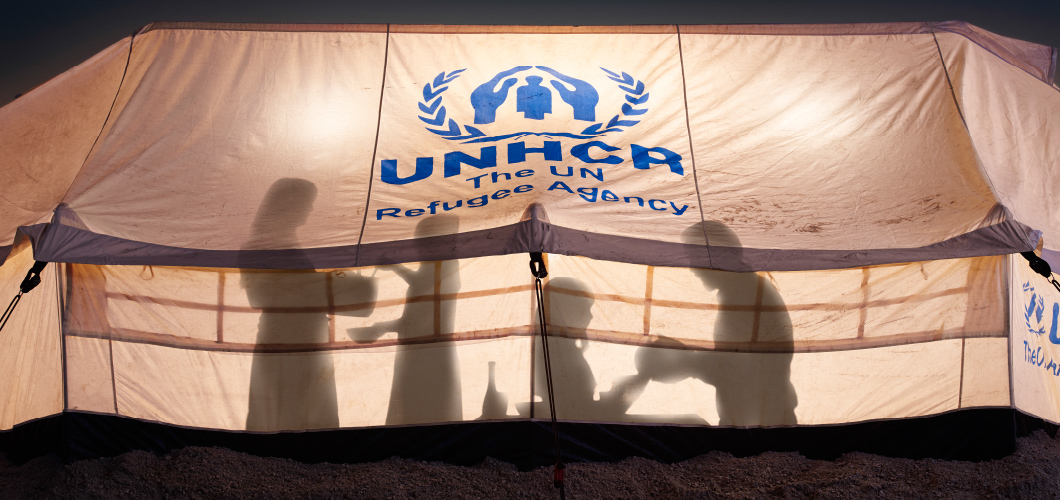Innovation is nothing new. Since the beginning of humanity, we humans have innovated. And by that I mean we’ve continually adapted ourselves and have found new ways to cope with complex challenges and crises, all the while improving our daily lives.
The word ‘innovation’ emerged more than 100 years ago, and 50 years later the private sector started to codify innovation as a process. The industrial and service worlds have truly honed the concept of innovation as a necessary reality within the competitive nature of the free market.
Fundamentally speaking, companies have to innovate or die.
In the public and NGO sectors, in the United Nations systems or, more precisely, in the humanitarian world, the word innovation is perceived as an exception, not the rule. Whenever I talk about innovation and UNHCR, the initial reaction is always a perplexed yet polite smile followed by,
“UN and innovation. Really? No… really?!”
Let’s unpack this.
While it may appear so, the reality is much more complex. Let’s take UNHCR as an example: one of the largest humanitarian organizations in the world, which, over 65 years of existence, has faced enormous odds and hardship yet managed to find solutions to protect and care for over 60 million people forced to flee their homes because of conflict or persecution.
Faced with unprecedented emergencies, UNHCR staff adapted themselves and found solutions to impossible situations. They innovated.
They innovated in the face of some of this century’s worst humanitarian crises, ranging from the aftermath of WWII, the Cambodian and Vietnam crises in the 60’s, to the more than 12 million refugees fleeing the India-Pakistan conflict in the 70’s. From the one million Rwandans crossing into the Democratic Republic of Congo in less than a week, the Bosnia crisis where staff heroically provided relief to a stranded population across mine fields in Sarajevo, to the current Syria crisis.
So why is it, then, that innovation and UNHCR is considered an oxymoron?
As I see it, there are three main reasons. First, over the years, as UNHCR staff would initiate an incremental or disruptive solution in the field, we missed the opportunity to document, evaluate, and share these as good practices across the organization. Second, we haven’t as yet incorporated into management practice the process of learning from setbacks, mistakes, and wrong assumptions. And third, the budgetary rigidity of an organization like UNHCR makes experimentation difficult. The controlled risk associated with the process of rapid prototyping has not been endorsed as a natural process.
What is true for UNHCR is very much the case for the rest of the humanitarian ecosystem. And, to add to all the complexities that make innovation particularly challenging in our sector is our tendency to work in silos. This has led to the disturbing phenomena of reinventing the wheel and not learning from lessons. The humanitarian system has for too long tolerated the syndrome of the “pilot project”. Symptoms of this syndrome include starting pilot project #2 without learning why pilot project #1 failed, or starting from scratch rather than iterating.
The good news is that the humanitarian sector knows that ‘business as usual’ is no longer sustainable, especially as we continue to confront crises of increasing complexity in increasingly insecure environments. And, as a whole, we are starting to embrace the concept of innovation as a management priority. From a taxpayer perspective, every effort should be made to find better, faster, cheaper, and more impactful interventions to provide relief to the millions of survivors of conflicts and natural disasters.
This is where innovation management comes in. Very much like the private sector, innovation management is about creating an enabling environment in which organizational leadership values innovation as a core function; an environment in which staff are encouraged to innovate and are rewarded for doing so. Several UN agencies are embracing innovation management, as is evidenced by setting up dedicated innovation units. These innovation units, like UNHCR Innovation, are established not to own innovation, but facilitate and manage the innovation process across field operations.
As a sector, while there is still much discussion around what a complete framework for managing the innovation process should look like, we are beginning to have a sense of what some of the individual components of that framework should be. These include setting up systems and tools for enabling rapid prototyping; securing flexible and dedicated funding to enable the design and adoption of new practices; and driving a human-centered design approach to new solutions, where the end-user (survivors of crises) are continually consulted for their opinion and feedback.
This new reality within the UN system is the result of good leadership. Luckily at UNHCR we have a High Commissioner and a Deputy High Commissioner who both understand the necessity for innovation within the agency. Without good leaders and partners to champion the necessity of innovation and innovation management, we are likely to continually hear, “UN and innovation. Really, no really?”
Photo Credit: © IKEA Foundation
If you’d like to repost this article on your website, please see our reposting policy.

